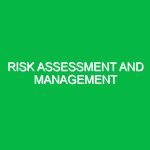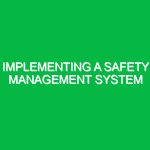Introduction
Conducting job hazard analyses (JHAs) is an essential practice in the Health, Safety, and Environment (HSE) sector. It involves systematically identifying and evaluating potential hazards associated with specific job tasks. The relevance of JHAs cannot be overstated; they serve as a fundamental tool in preventing workplace accidents, injuries, and illnesses. By proactively addressing risks, organizations can foster a safer work environment that prioritizes employee well-being and compliance with regulatory standards.
A memorable experience from my time in the construction industry highlights the importance of JHAs. During a project, a colleague overlooked the analysis of working at heights, which resulted in a near-miss incident that could have been catastrophic. This incident reinforced the idea that JHAs are not just a formality but a crucial element in safeguarding lives and ensuring operational efficiency.
In this article, we will delve into the intricacies of conducting job hazard analyses, explore the potential hazards associated with various tasks, outline safety precautions, and discuss relevant regulations that govern this critical process.
Understanding Job Hazard Analyses
What is a Job Hazard Analysis?
A Job Hazard Analysis is a process used to identify potential hazards associated with specific jobs or tasks. It helps in understanding the risks involved and provides a framework for implementing safety measures. The primary goal is to minimize the likelihood of accidents and injuries by foreseeing potential problems before they occur.
The JHA process typically involves three essential steps:
1. **Identifying Job Tasks**: Break down the job into its individual tasks or steps.
2. **Identifying Hazards**: For each task, identify potential hazards, which may include physical, chemical, ergonomic, or environmental risks.
3. **Implementing Controls**: Develop and implement strategies to eliminate or mitigate the identified hazards.
This structured approach not only aids in compliance with legal obligations but also promotes a culture of safety within the organization.
The Relevance of JHAs in HSE
In the realm of Health, Safety, and Environment, JHAs are invaluable. They serve multiple purposes:
– **Risk Management**: By identifying hazards, organizations can manage risks more effectively.
– **Employee Training**: JHAs provide a basis for training employees about potential risks and safe practices.
– **Regulatory Compliance**: Many regulations require organizations to conduct JHAs, ensuring compliance with safety standards.
– **Continuous Improvement**: Regularly revisiting and updating JHAs fosters a culture of continuous improvement in safety practices.
Identifying Potential Hazards and Risks
Types of Hazards
When conducting job hazard analyses, it is crucial to understand the various types of hazards that may be present. These can be categorized into several groups:
1. **Physical Hazards**: These include environmental factors that can cause harm, such as noise, temperature extremes, and radiation. For instance, workers in a manufacturing plant may face risks from machinery or falling objects.
2. **Chemical Hazards**: Exposure to harmful substances, whether through inhalation, skin contact, or ingestion, falls into this category. An example would be workers in a chemical plant who are exposed to toxic fumes without proper ventilation.
3. **Biological Hazards**: These involve exposure to harmful biological agents, including bacteria, viruses, and other pathogens. Healthcare workers, for example, may encounter these hazards when handling infected materials.
4. **Ergonomic Hazards**: Poorly designed workstations or tasks that require repetitive motions can lead to musculoskeletal disorders. For instance, employees performing assembly line work may develop chronic pain due to repetitive strain.
5. **Psychosocial Hazards**: These pertain to workplace stressors that can affect mental health, such as excessive workloads or bullying. Recognizing these factors is critical for fostering a supportive work environment.
Real-Life Example: Construction Site Hazards
In a construction setting, the potential hazards can be profound. For example, workers may face risks from working at heights, using heavy machinery, or dealing with hazardous materials like asbestos. A JHA can reveal that, while working on scaffolding, the risk of falls is significant. Implementing guardrails and providing fall protection harnesses can significantly reduce this risk.
Safety Precautions and Best Practices
Implementing Safety Measures
Once hazards have been identified through the JHA process, the next step is to implement safety measures. Here are several best practices to consider:
1. **Elimination or Substitution**: Whenever possible, eliminate the hazard or substitute it with something less hazardous. For instance, using water-based paints instead of solvent-based ones can reduce exposure to harmful fumes.
2. **Engineering Controls**: If elimination is not feasible, engineering controls can help isolate workers from the hazard. This might include installing ventilation systems to manage airborne contaminants in a confined space.
3. **Administrative Controls**: Implementing policies and procedures can help reduce exposure to hazards. For example, rotating workers to limit their exposure time to hazardous conditions can be effective.
4. **Personal Protective Equipment (PPE)**: Providing appropriate PPE, such as helmets, gloves, and respirators, is critical for protecting workers from hazards that cannot be completely eliminated. Regular training on the correct use of PPE is essential.
5. **Training and Communication**: Regular training sessions on safety practices and clear communication regarding hazards are vital components of an effective safety program. Employees should feel empowered to voice concerns about unsafe conditions.
Best Practices for Conducting JHAs
To ensure the effectiveness of JHAs, consider these best practices:
– **Involve Employees**: Engage workers in the JHA process. Their firsthand knowledge of the tasks can provide invaluable insights.
– **Regularly Review and Update**: Job conditions change, and so do the associated hazards. Regularly reviewing and updating JHAs ensures they remain relevant.
– **Document Everything**: Maintain thorough documentation of the JHA process, including identified hazards, implemented controls, and employee training records.
– **Promote a Safety Culture**: Encourage open discussions about safety and foster an environment where employees feel comfortable reporting hazards or near misses.
Regulations and Standards Governing Job Hazard Analyses
Understanding the legal frameworks surrounding job hazard analyses is crucial for compliance and effective safety management. Various regulations and standards govern the process, including:
Occupational Safety and Health Administration (OSHA)
In the United States, OSHA sets forth regulations that require employers to provide a safe workplace. While OSHA does not mandate formal JHAs, it does require employers to assess workplace hazards and implement necessary safety measures to protect employees. The General Duty Clause is particularly relevant, stating that employers must maintain a workplace free from recognized hazards.
National Institute for Occupational Safety and Health (NIOSH)
NIOSH provides guidance and recommendations for conducting JHAs as part of its mission to ensure worker safety. Their resources can aid organizations in developing effective JHA processes tailored to specific industries.
ISO Standards
International Organization for Standardization (ISO) standards, particularly ISO 45001, outline requirements for occupational health and safety management systems. Implementing these standards can help organizations improve their JHA processes and overall safety culture.
Conclusion
Conducting job hazard analyses is a critical component of health, safety, and environmental management. By systematically identifying and addressing potential hazards, organizations can significantly reduce the risk of accidents and injuries in the workplace. The importance of JHAs extends beyond compliance with regulations; they foster a culture of safety and responsibility that benefits both employees and the organization as a whole.
As seen in various industries, the proactive identification of hazards can prevent tragedies. Equipped with the right knowledge, tools, and commitment, organizations can ensure that their workplaces are not just compliant but genuinely safe for everyone involved. Ultimately, conducting job hazard analyses is not merely a procedural obligation; it’s a moral imperative to protect the most valuable asset of any organization—its people.


